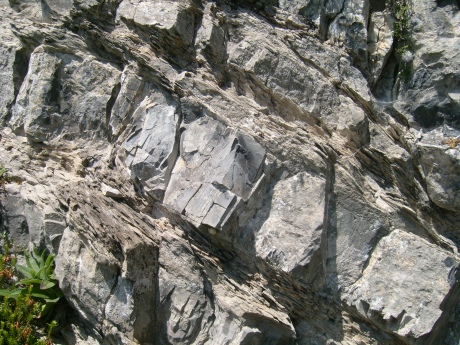Stefano Rossignoli 12 Ottobre 2009
Aspetta un attimo! Attenda un istante prego… Quanti modi di dire per farsi aspettare… Sappiamo tutti che un istante è un periodo di tempo irrisorio, qualche secondo, qualche minuto, ma quanto dura un istante paleontologico?
Trattandosi di una scienza, anche in paleontologia le grandezze devono essere misurabili ed essendo il tempo la cosa assolutamente più importante, anche questo viene misurato e quantificato.
Come unità di misura del tempo, solitamente si utilizzano le migliaia o i milioni di anni, più raramente i miliardi…
Ma come lo misuriamo e come accertiamo che un reperto è più antico di un altro?
Quando ne parlo con la gente, mi dicono quasi sempre:”Col carbonio!”.
Chissà perchè c’è la credenza che col metodo del carbonio 14 si possa datare tutto… Per questo vi rimando all’articolo dedicato, ma la datazione dei fossili (almeno quella relativa) è teoricamente molto semplice.
Visto che gli organismi vengono per forza seppelliti prima di fossilizzare, quelli che stanno sotto di solito sono più antichi di quelli che stanno sopra, semplicemente perchè sono arrivati lì prima!
Poi le rocce possono anche piegarsi, rovesciarsi, rompersi e scivolare le une sulle altre e le situazioni si possono enormemente complicare e la datazione può diventare un problema enormemente complicato.
Ma torniamo al nostro istante…
Per misurare un istante serve un’unità di misura piuttosto piccola e i paleontologi di solito ragionano a strati! Sono gli strati di sedimenti o di rocce sedimentarie le unità di misura effettivamente utilizzate dai paleontologi. Questi poi possono essere misurati in tempo effettivo.
Ma a che precisione possiamo arrivare?
Gli strati del passato più regolari e precisi misurabili arrivano a farci distinguere al massimo l’estate e l’inverno.
Ad esempio, in un laghetto vicino ad un ghiacciaio, d’estate arriva molta acqua e sedimento grossolano che può depositarsi e formare uno strato, poi d’inverno non arriva più acqua, la superficie del lago gela e non c’è più energia. E’ in questo momento che i sedimenti più fini (il limo) che si trovavano in sospensione nell’acqua che sta sotto la coltre ghiacciata, si depositano sul fondo formando uno strato solitamente più scuro e più sottile. Questi strati si chiamano Varve e di solito sono molto sottili, nell’ordine di qualche millimetro o pochi centimetri.
Ancora più sottili sono gli strati dei ghiacciai antartici. Nelle zone più centrali delle calotte antartiche, ogni anno nevica; molto poco, infatti l’Antartide è paragonabile ad un grande deserto per la sua bassissima quantità di precipitazioni. Ma con la temperatura così bassa, tutta la neve che cade si conserva e forma uno strato. La neve che cade in inverno è chimicamente diversa da quella che cade in estate e ad un’accurata analisi si nota questa piccola differenza.
Il problema è che più si va indietro nel tempo, più si perde finezza e sensibilità nel misurare gli intervalli di tempo.
Purtroppo non si trovano Varve che hanno cominciato a depositarsi agli inizi della vita sulla Terra e che stanno depositandosi ancora oggi…
Per la verità di Varve poi se ne trovano poche.
Esistono normalmente strati che si sono formati in migliaia di anni e non si può assolutamente determinare cosa è successo in intervalli piccoli di tempo.
Sarò più pratico. Immaginate uno strato o una serie di strati di sedimenti spessa 10cm e deposta in 1000 anni.
Se ci trovaste un osso di grandi dimensioni perfettamente conservato questo potrebbe anche occupare tutto lo strato o attraversarne addirittura degli altri, quindi non posso datarlo con certezza, ma con un errore di più o meno 1000 anni circa o anche peggio!
Ci sono teorie sulle estinzioni di massa, come ad esempio quella di 65 milioni di anni fa in cui sono stati coinvolti anche gli ultimi dinosauri comparsi sulla Terra, in cui si afferma che il tutto è durato uno o due anni.
Ovviamente la paleontologia non è in grado di dare un supporto temporale a questa teoria, semplicemente perchè non si può capire cosa sia avvenuto in un tempo così ‘piccolo’.
Due anni, in paleontologia, sono molto meno di un istante…
Allora forse, quando un paleontologo vi dirà:”attenda un istante”, assicuratevi che non sia un istante paleontologico ma un istante attuale, altrimente potreste rischiare anche di non vederlo più…!

:))